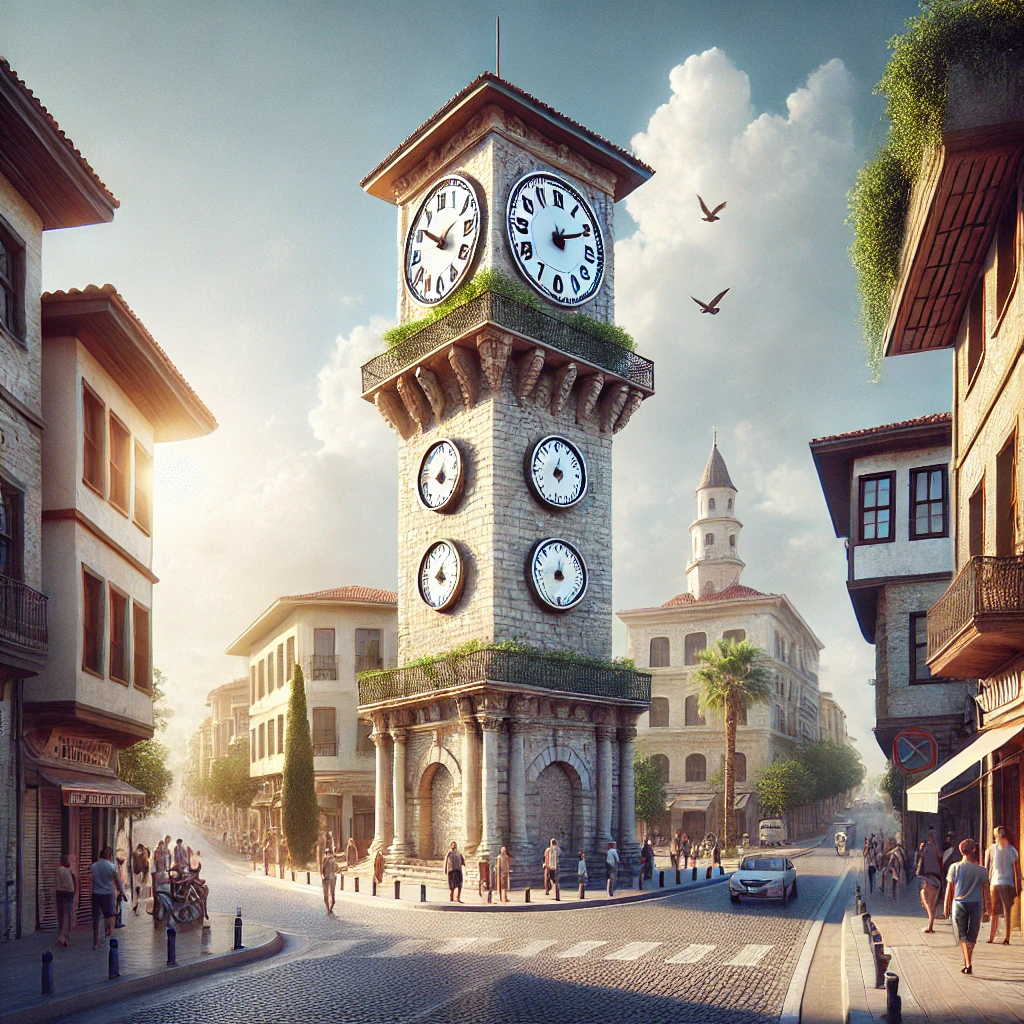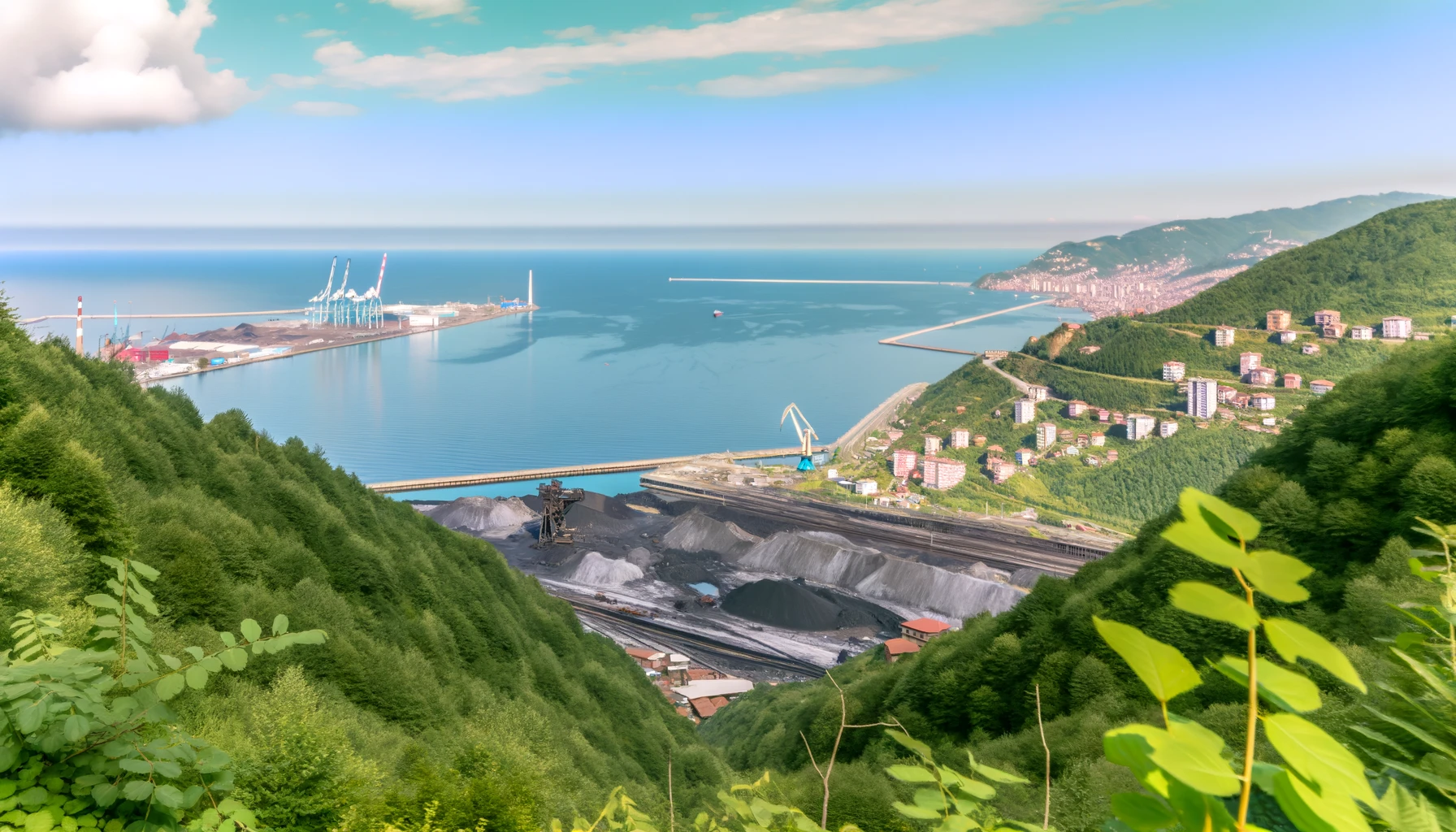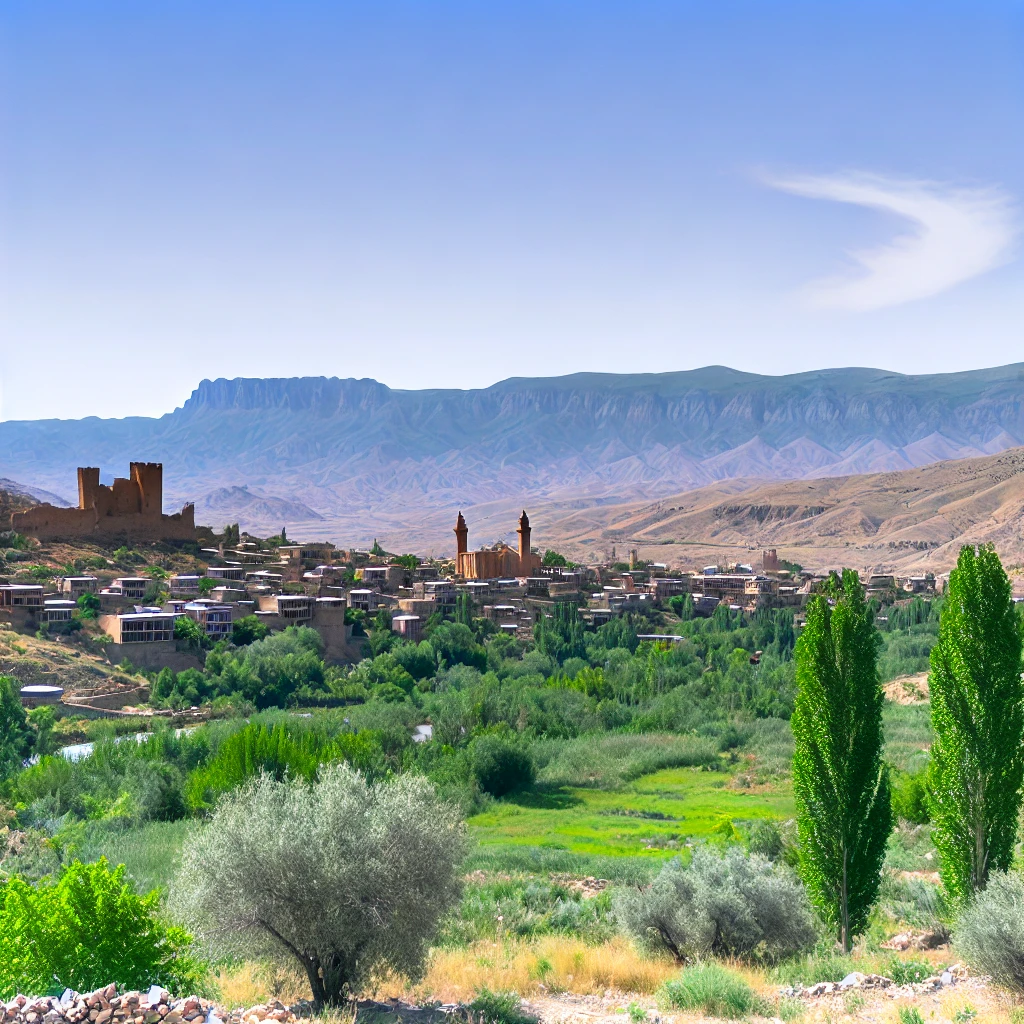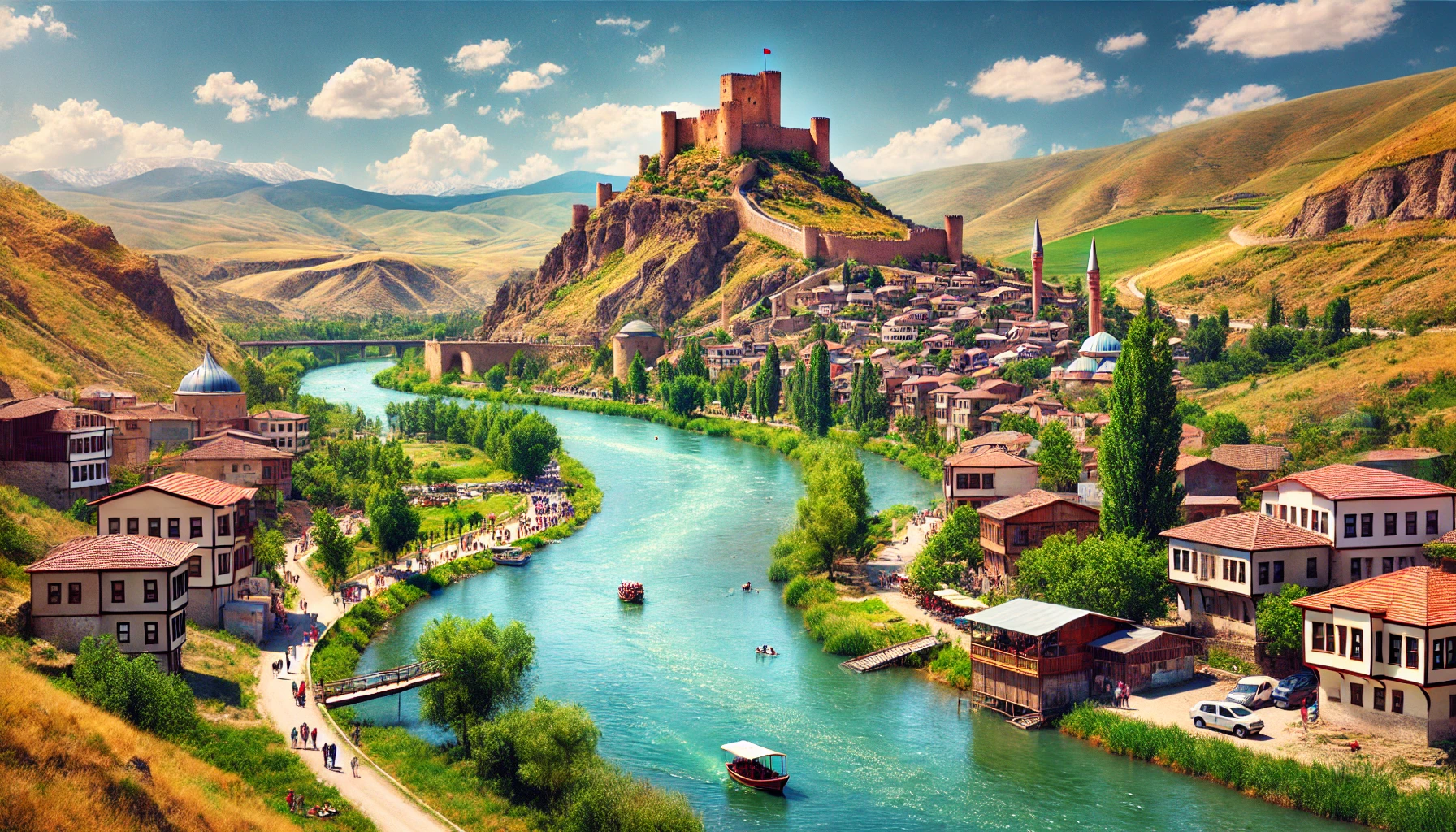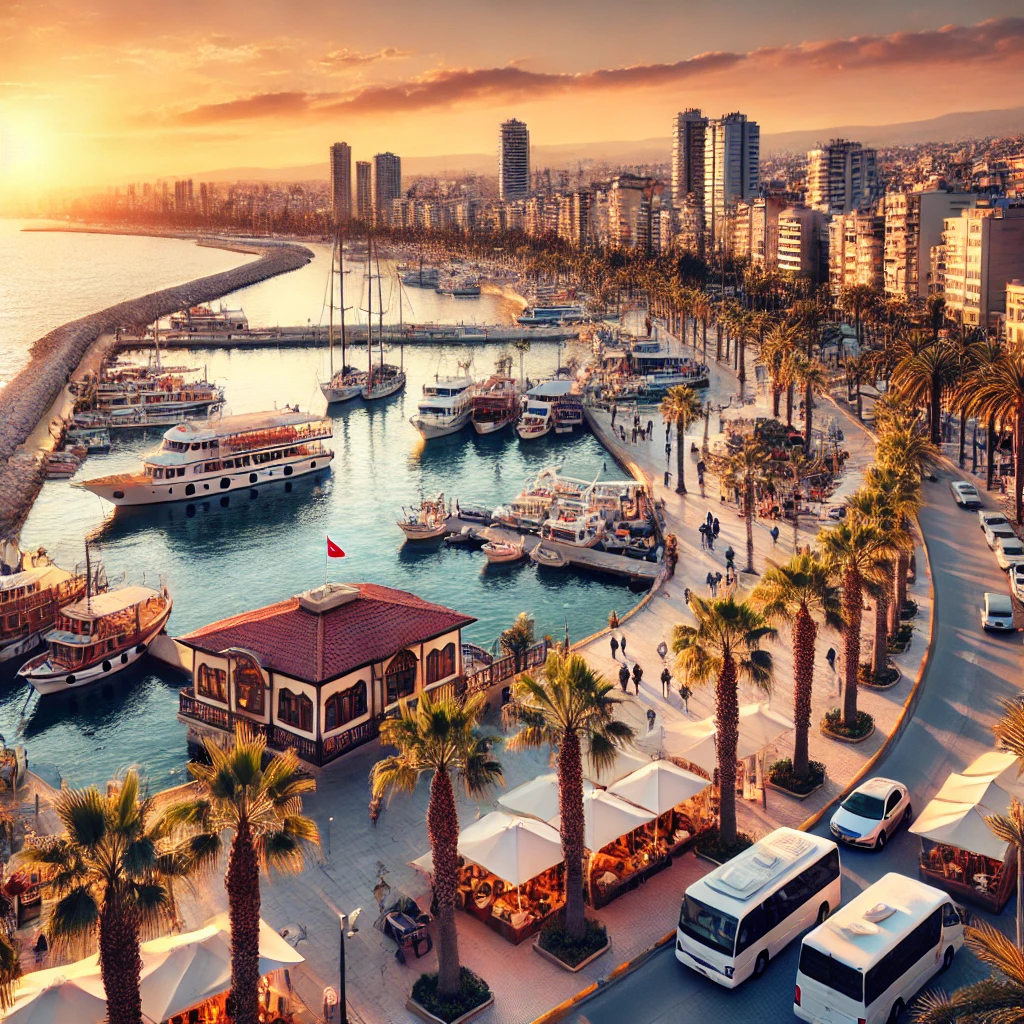Kalekapısı: The Historic Gateway to Antalya’s Old Town
The Clock Tower, located in the heart of Antalya, stands as one of the most iconic landmarks of the city. Situated on Cumhuriyet Street in the Kalekapısı area, this historical structure has witnessed the evolution of Antalya from ancient times to the modern era. The Clock Tower, with its distinctive architecture and central location, is not only a popular meeting point for locals but also a must-see attraction for tourists. In this article, we will explore the rich history, architectural significance, and cultural importance of the Clock Tower, making it a compelling destination for anyone visiting Antalya.
The Historical Significance of the Clock Tower
Origins in the Byzantine Period
The Clock Tower’s history dates back to the Byzantine period, specifically to the 9th century. Originally, the site where the Clock Tower now stands was part of the outer walls surrounding the ancient city of Kaleiçi. These walls served as a defensive barrier, protecting the city from potential invasions. The tower was initially constructed as a square-plan structure on a pentagonal bastion, forming a critical part of the city’s fortifications.
Transformation During the Ottoman Empire
The current form of the Clock Tower was developed during the Ottoman Empire. Although the exact date of its transformation is not precisely known, it is widely believed that the tower was converted into a clock tower in 1901. This period coincides with the reign of Sultan Abdulhamid II, who popularized the construction of clock towers across Anatolia as symbols of modernization and progress. The Clock Tower of Antalya thus became a symbol of the city’s integration into the broader Ottoman Empire, reflecting both its historical roots and its adaptation to new cultural and technological developments.
The National Struggle and Completion
The Clock Tower holds significant historical importance in the context of Turkey’s national struggle. According to local sources, the construction of the tower was completed in 1921, during a tumultuous time when the national struggle against occupying forces was ongoing. The tower’s completion during this period symbolizes the resilience and determination of the Turkish people in the face of adversity.
Architectural Brilliance of the Clock Tower
The Square Plan and Pentagonal Bastion
The Clock Tower’s architectural design is both functional and aesthetically pleasing. Built on a square plan atop a pentagonal bastion, the tower’s structure reflects the strategic importance of its location. The bastion provided a sturdy base for the tower, ensuring its stability and longevity. The use of local stone in the construction further adds to the tower’s historical authenticity, blending seamlessly with the surrounding architecture of the old city.
The Dome and Subsequent Modifications
Originally, the Clock Tower was topped with a dome, which added to its grandeur. However, in 1942, a severe storm damaged the dome, leading to its removal. In 1945, the tower was modified with an upper part that resembled bastions, giving it a more fortress-like appearance. These modifications, while altering the tower’s original design, contributed to its unique and enduring character.
The Four Clocks and Bell
One of the most striking features of the Clock Tower is the presence of four clocks on its four sides, each providing a clear view of the time from different angles around the city. The clocks are complemented by a bell at the top, which historically chimed every hour. This bell, along with the clocks, made the tower a crucial timekeeping structure for the residents of Antalya, long before the advent of modern technology.
Decorative Elements
The Clock Tower is not only a functional timepiece but also an example of fine craftsmanship. The perimeter of the bastion is adorned with a cornice featuring intricate leaf reliefs, adding a touch of elegance to the tower’s robust structure. Above this cornice, the upper part of the tower is made of rough-hewn stone, which contrasts beautifully with the more refined elements below. These decorative details reflect the blend of Byzantine and Ottoman influences that characterize much of Antalya’s historical architecture.
Cultural and Social Importance
A Symbolic Meeting Point
Due to its central location and historical significance, the Clock Tower has long been a popular meeting point for the residents of Antalya. Whether for social gatherings, business meetings, or simply as a reference point in the city, the Clock Tower has served as a communal hub for generations. Its role as a meeting place underscores its importance not just as a historical monument, but as a living part of the city’s social fabric.
The Clock Tower in Modern Antalya
Today, the Clock Tower continues to hold a special place in the hearts of Antalya’s residents and visitors. It is a key feature in the city’s silhouette, adding a touch of historical charm to the modern urban landscape. The area around the Clock Tower is bustling with activity, with shops, cafes, and markets providing a vibrant backdrop to this enduring symbol of Antalya’s heritage.
Preservation and Restoration Efforts
Recognizing the Clock Tower’s cultural and historical value, efforts have been made to preserve and restore the structure. These efforts have ensured that the Clock Tower remains in good condition, allowing future generations to appreciate its significance. Restoration projects have focused on maintaining the tower’s structural integrity while preserving its unique architectural features, ensuring that it continues to stand as a proud symbol of Antalya’s rich history.
Exploring the Clock Tower and Its Surroundings
Cumhuriyet Street: The Heart of Antalya
The Clock Tower is located on Cumhuriyet Street, one of the main thoroughfares in Antalya. This street is not only a central artery of the city but also a reflection of its vibrant culture and history. Walking along Cumhuriyet Street offers visitors a chance to experience the dynamic energy of Antalya, with its mix of modern shops, historical buildings, and bustling street life.
Kalekapısı: The Gateway to Kaleiçi
Kalekapısı, where the Clock Tower is situated, is often referred to as the gateway to Kaleiçi, Antalya’s historic old town. This area is steeped in history, with ancient walls, narrow streets, and traditional Ottoman houses creating a picturesque setting. Exploring Kalekapısı and its surroundings offers a glimpse into Antalya’s past, with the Clock Tower serving as a prominent landmark in this historical district.
Nearby Attractions
Visitors to the Clock Tower will find themselves in close proximity to several other important attractions. Hadrian’s Gate, a well-preserved Roman triumphal arch, is just a short walk away and offers insight into Antalya’s ancient past. The Yivli Minaret, another iconic symbol of the city, is also nearby, providing an excellent opportunity to explore the architectural diversity of Antalya. Additionally, the Antalya Museum, which houses an extensive collection of artifacts from the region’s history, is within easy reach and is well worth a visit.
The Clock Tower and Antalya’s Identity
A Symbol of Resilience and Continuity
The Clock Tower’s long history and its ability to withstand the test of time make it a powerful symbol of resilience and continuity in Antalya. From its origins in the Byzantine period to its transformation during the Ottoman Empire and its role in the national struggle, the Clock Tower embodies the enduring spirit of the city. Its presence in the modern era serves as a reminder of Antalya’s rich and complex history, connecting the past with the present.
The Role of the Clock Tower in Tourism
As one of Antalya’s most recognizable landmarks, the Clock Tower plays a significant role in the city’s tourism industry. It is featured in countless photographs, travel guides, and promotional materials, making it an essential stop for visitors exploring the city. The Clock Tower not only attracts tourists but also educates them about the historical and cultural significance of Antalya, enhancing their overall experience.
The Future of the Clock Tower
Looking ahead, the Clock Tower is expected to continue playing a vital role in Antalya’s cultural and social life. Ongoing preservation efforts will ensure that this historic structure remains a key part of the city’s landscape, while also adapting to the needs of a modern urban environment. The Clock Tower’s enduring appeal lies in its ability to represent the rich history of Antalya while remaining relevant and accessible to future generations.
Conclusion
The Clock Tower of Antalya is more than just a historical monument; it is a symbol of the city’s rich cultural heritage and a testament to its resilience through the ages. From its origins in the Byzantine period to its transformation during the Ottoman Empire and its role in modern Antalya, the Clock Tower stands as a proud reminder of the city’s past while continuing to be an integral part of its present. Whether you are a history enthusiast, an architecture lover, or simply a traveler looking to explore Antalya’s cultural landmarks, the Clock Tower is a must-visit destination.
For more information on planning your trip to Antalya and discovering other historical sites, visit the Travel Guide of Türkiye.
Latest Update: Aug 11, 2024
Your Content Goes Here
TAGS: Antalya architecture, Antalya city center, Antalya Clock Tower history, Antalya clock towers, Antalya cultural heritage, Antalya historical sites, Antalya history, Antalya landmarks, Antalya meeting point, Antalya monuments, Antalya Old Town, Antalya tourism, Antalya travel guide, Byzantine period Antalya, Clock Tower Antalya, Clock Tower preservation, Cumhuriyet Street Antalya, Kaleiçi attractions, Kalekapısı, Ottoman architecture
A brief summary of the key points in this article.
Latest Travel Guides
Weather Today in Clock Tower, Antalya, Turkey
Location: Antalya Province
Temperature: 8.33°C
Condition: Few clouds

